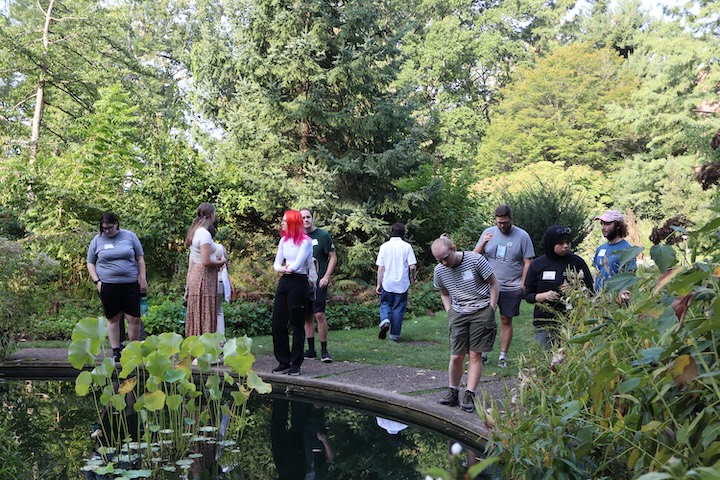MSU’s natural areas bring the classroom outdoors
In 2021, Alan Prather , an EEB core faculty member, and his team at the Michigan State University Herbarium published a paper about declining native species in natural areas. Conducting research at MSU’s Baker Woodlot and Rajendra Neotropical Migrant Bird Sanctuary, they visited several times each week to inventory and observe plant species in the 78-acre area in the southeast of MSU’s main campus. “It was only possible,” Prather says, “because we could walk from the herbarium to the natural area in seven minutes.”

It was also possible, Prather says, because similar research had been conducted 40 years earlier at the same site. Prather, now the interim director of the Beal Botanical Garden, and his team compared their findings to an inventory from decades ago, allowing them to see what had changed. The paper found that MSU was doing a good job at preservation but was still slowly losing native species.
MSU researchers and faculty have been utilizing their proximity to natural areas across campus for a long time. The research may not go as far back as the Beal Seed Experiment, but there are reports and publications dating back to at least the 1930s. Plus, researchers have more spaces than the Baker Woodlot, which is just one of MSU’s many campus natural areas. There are more than 700 acres in 25 distinct sites across campus, providing important examples of MSU’s rich natural heritage and offering significant resources for teaching, research, demonstration and nature appreciation.
Thanks to these spaces, research and teaching at MSU extend beyond the classroom.
To take an exam or quiz in David Rothstein’s forest vegetation course, students trek to the Baker Woodlot or other natural areas on campus. With pen and paper in hand, they follow a predetermined route examining trees, shrubs and plants, writing down the common name, scientific name and what family each one belongs to.
“That kind of hands-on learning is very unique,” Rothstein says. “The natural areas on campus provide that opportunity — you’re not getting that at a lot of universities.”
Rothstein is a professor in the Department of Forestry and has conducted research and taught classes at MSU since 2000. The forest vegetation course was the first one he taught, and he has always used the campus natural areas, which, he says are “as important for a forestry education as any sort of brick-and-mortar classroom.” The fact that they are a five-minute walk from his office in the Natural Resources Building and accessible for students makes a big difference for his classes.
It makes a difference for students, too.The 25 sites that make up MSU’s natural areas span the Sanford Natural Area that hugs the Red Cedar River from Bogue Street to Hagadorn Road at the northeast corner of campus to the Lott Woodland a few miles south on the MSU research farms. As Prather says, “The natural areas permeate campus.” MSU is a steward of these spaces, protecting native biodiversity, sustainable management of resources within the natural areas and balancing activities proposed for specific natural areas with conservation objectives.
As part of the MSU 2030 Strategic Plan, the university is taking steps toward climate neutrality by 2050, doing its part to address global climate challenges through its work on campus and beyond. According to the latest Times Higher Education Impact Rankings, MSU is No. 2 in the U.S. and No. 26 globally for sustainability. The university also earned a gold rating for sustainability achievements through the Association for the Advancement of Sustainability in Higher Education.
Maintaining these natural areas is a vital part of that sustainability commitment. MSU’s campus is home to more than 20,000 trees, many of which can be found in places like the Baker Woodlot, which is part of the national Old Growth Forest Network. The Toumey Woodlot is on the National Park Service Register of Natural Landmarks. And the Baker Woodlot and Sanford, Hudson and Red Cedar natural areas all have state-listed rare plants.
Stewarding these areas is important not only for sustainability but also for the enjoyment and benefits they provide to the entire Spartan community.
Read the full story in MSU Today.



